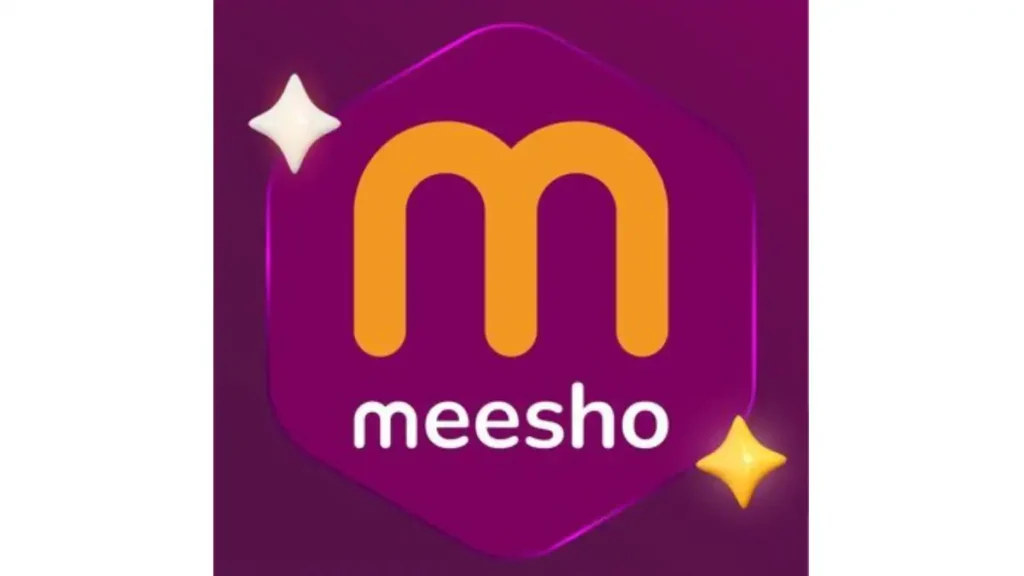In that heady, dynamic Indian e-commerce environment, where the likes of Amazon and Flipkart and others jockey for position, another kind of revolution had begun – hidden from view and below the radar. At its core sits the heroic figure of Vidit Aatrey— Meesho’s co-founder and entrepreneur extraordinaire of a captain. Different from typical, transaction-focused models, Meesho has found a forceful groove, trailblazing the landscape of social commerce and, in turn, uplifting millions of small business owners, especially women, from India’s Tier 2, 3, and 4 cities and beyond.
Aatrey’s journey with Meesho is far from being a story of simply constructing a highly lucrative tech company, harnessing the potency of community, and establishing an all-encompassing digital ecosystem that forms livelihoods. By 2025, Meesho will become a real force to contend with, disrupting the traditional e-commerce playbook and changing the way millions of Indians shop and earn money online.
The Formative Years Beyond IIT Delhi—Towards Entrepreneurial Causation
Vidit Aatrey’s entrepreneurial underpinnings were originally developed through academic studies at one of India’s most acclaimed centers for technological innovation, the Indian Institute of Technology Delhi (IIT Delhi), from which he graduated with a degree in Mechanical Engineering. This demanding education gave him a powerful problem-solving orientation and sharp analytical skills, which would prove indispensable in grappling with the complexities of the startup world.

Beyond academics, Aatrey’s time across different industries—even if inadvertently—sharpened his tools to tackle the glaring issues central to the uncharted waters of e-commerce and new-age consumerism that India had to offer. His previous experiences include working at global firms such as InMobi, a global mobile advertising platform, and ITC Limited, a diversified Indian conglomerate with a rich history in Fast-Moving Consumer Goods (FMCG). At InMobi, he learned deeply about mobile technology, user engagement, and data analytics – all foundational to an effective digital platform. His tenure at ITC helped him appreciate the complexities of large consumer markets, and supply chains and how to decipher the buying patterns of a varied Indian consumer base.
It was this cumulative experience and a real market insight into the need for a low-investment e-commerce channel that let the initial idea for Meesho blossom. Aatrey had identified a huge untapped opportunity—the hundreds of millions of people, particularly homemakers and small business owners, that had the strong social connections and inherent entrepreneurial spirit needed to succeed online but didn’t have the capital or digital infrastructure required to run a typical online business. He imagined a platform that would democratize online selling, allowing these people to become digital resellers without having to worry about inventory, logistics, or payment gateways, in short, doing it all themselves.
It all began…
Meesho’s conceptualization took a concrete form in 2015 with Vidit Aatrey collaborating with his IIT Delhi batchmate, Sanjeev Barnwal. Together, they set out to serve individual resellers by harnessing the power of social media, which is now everywhere. The original model was actually quite beautifully simple. The idea was for Meesho to link manufacturers and wholesalers of unbranded fashion products directly to a network of individual resellers. These resellers, mostly women, would go on to distribute and sell these products to their own social networks—friends, family, and people in their local communities—essentially through WhatsApp, Facebook, and Instagram.
The reseller’s role was key. They would shutter shop Meesho’s catalog, choose products, add their own margin, and share images and particulars with their customer networks. Once an order came in, the reseller would just pass that order on to Meesho, who would go on to take care of the rest: sourcing the product from the supplier, doing quality checks, packaging, logistics, and collecting payments. In this scenario, the reseller would be paid their commission upfront. This model eliminated the need for resellers to procure inventory, cargo space, or handle intricate supply chain logistics, drastically reducing the barrier of entry for young entrepreneurs.
Early challenges for Meesho were threefold. Developing trust in an extremely fragmented market, providing low-cost, high-quality quality assurance across hundreds of suppliers, and managing complex logistics including last-mile delivery, particularly in rural areas took tremendous work. Processing returns and customer complaints quickly and competently was equally important to keeping resellers and customers happy. The unique value proposition really hit home. Meesho went on to raise impressive early rounds, including becoming the first Indian startup to be accepted into Y Combinator’s accelerator program in 2016. This early recognition was important not only for public recognition but for the mentorship and capital resources that this recognition brought.
A big part of Meesho’s strategy, and a major differentiator, was its zero-commission approach. Meesho charged no direct platform fee initially and still doesn’t directly charge either party. This strategy was to bring on board a critical mass of small and medium enterprises (SMEs) as well as individual resellers to form a highly competitive marketplace which, in theory, would lower prices for the end consumer. This counter-intuitive strategy concentrated Meesho as a genuine ally to its sellers and resellers, encouraging explosive development and viral use.

Scaling and Evolution Beyond Reselling, into Direct-to-Consumer
As Meesho began picking up steam, Vidit Aatrey and his team understood that in order to continue strong growth rates and have a more diversified revenue model they had to move beyond a strictly reselling model. This is around the time the company started to really branch out its product categories, expanding well past fashion and apparel to include home goods, electronics, kitchenware, personal care, and beyond. This expansion was a play to cast a wider net across various consumer needs and drive purchase frequency.
Another huge strategic move was when Meesho started enabling direct-to-consumer (D2C) purchases through its platform, in addition to its reselling model. This created an interesting dual-channel model where individual resellers still earned commissions, but customers could directly search and view product listings on Meesho, usually at cut-throat prices. This shift allowed Meesho to pivot away from being solely a social commerce platform, to being a hybrid e-commerce marketplace, taking on the industry’s titans head-on, while continuing to leverage its distinctive reseller network.
That laser-like focus on Tier 2, 3, and 4 cities would become the winning domestic strategy for Meesho. He knew that internet penetration across these regions was especially booming, the e-commerce options catered to their unique needs, tastes, and price sensitivities were non-existent. Meesho unlocked this market by providing unbranded, low-cost products, the local reseller’s trust networks, and a convenient mobile-first experience. This deep penetration into ‘Bharat’ allowed Meesho to tap into a huge, underserved customer base that other big e-commerce players usually found hard to access efficiently.
Technology and innovation have really been Meesho’s secret sauce in scaling the company. The platform later made substantial investments in applied AI and machine learning for everything—from hyper-personalization of product recommendations to individual customers and business resellers, optimizing logistics for its huge supply chain, to using predictive data models to streamline seller onboarding processes. Their lean operational model and focus on cost efficiency made it possible for them to sell those products at very attractive price points.
The firm’s almost unimaginably sharp ascent was complimented by huge funding rounds along the way. Meesho, like a number of other online shopping platforms in the region, quickly became a unicorn themselves luring in global giants like SoftBank Vision Fund, Prosus Ventures, Fidelity Management and Research Company, and B Capital Group. This massive flood of capital accelerated its incredibly rapid growth, enabling it to establish a strong technological backbone, widen its logistics embrace, and deepen its reach into new, previously inaccessible markets. Keeping up with this fast-paced growth presented unique challenges of their own, especially in terms of supplier quality control and delivering the same flawless customer experience at a larger scale.
Changing E-commerce Principles, One Reseller at a Time The Meesho Mantra
Meesho’s meteoric rise can be attributed to its unconventional ethos that turned the traditional Indian e-commerce playbook on its head:

Deep Penetration in Bharat Similar to early e-commerce entrants whose core markets were limited to metros, Meesho made its bed by earning the trust and serving the aspirations of non-metro India. It served a demographic that favors value, uses social recommendations, and enjoys cash-on-delivery conveniences.
Empowering Community for a Brighter Future Meesho’s biggest impact has been in building that community, unlocking the entrepreneurial ambitions of millions of resellers, women mostly. It allowed them a have a zero-investment model, to be a small online business owner, helping them to escape poverty and financial insecurity through grassroots entrepreneurship. This is the most socio-economically impactful aspect of it.
Lean Operations and Cost Effectiveness By sticking with a lean operational structure to avoid warehousing costs (including during its early aggregation stage) and through logistics cost optimizations, Meesho has managed to keep its product price points very low, enabling e-commerce to be accessible to a much wider consumer base.
Zero Commission Model of Competing Suppliers Competition Effects Though Meesho’s effects on competition were later moderated, Meesho’s zero-commission seller model initially cultivated intense rivalry between suppliers that lowered prices and drew in millions of small manufacturers who would have otherwise been locked out of the online marketplace because of hefty commission charges. This enabled insane competitive pricing that played well to every value-minded buyer out there.
Data-Driven Decision-Making From identifying trending products to optimizing last-mile delivery routes to personalizing customer recommendations, data drives Amazon’s decision-making. Today, Meesho’s operations are so data-driven that they can make decisions within 30 minutes at times using data to inform their decision-making.
Supplier-Friendly Climate & Infrastructure By eliminating up-front costs (such as commissions) and creating a low-friction supplier onboarding process, Meesho built an extensive and diverse supplier base. This is key to providing a long tail of low-cost products.
Also check:- The Visionary Behind the Blinkit: Albinder Dhindsa’s Journey from Grofers to Quick Commerce Kingpin
Challenges, Competition, and Future Outlook
For all its outstanding success, Meesho, at the helm of 30-year-old Vidit Aatrey, treads a tricky and competitive ecosystem. Legacy e-commerce leaders such as Amazon and Flipkart are racing to establish their foothold in Tier 2/3 cities, tailoring their approach to the Indian market where they must compete on price and delivery time. The emergence of new short-video platforms can further serve as new avenues for social commerce to flourish.
Ensuring the same level of quality control in a highly decentralized marketplace along such a large and varied network of micro suppliers is an ongoing challenge for Meesho. Delivering customer satisfaction, addressing returns and reverse logistics smoothly, and earning consumer trust in the largely unbranded product environment takes ongoing discipline and effort.
One key element to Meesho’s long-term strategy is monetization and becoming profitable. Though the zero-commission model got everyone to scale, the road to sustainable profitability runs through new and different revenue streams. Second, Meesho has been trying out different things, like charging sellers for value-added services (think promotional tools, logistics support), running its own advertising revenue, and possibly even a commission on select categories in a more complex structure. Now 2025, the company is still on the tightrope, caught between the need for deep and rapid growth and the growing expectation that they’ll be consistently profitable.
After this milestone, Vidit Aatrey’s vision is for Meesho to continue penetrating deeper into India, unlocking the potential for millions more individuals and small businesses to sell successfully online. There’s work to do first by solidifying its lead in the gigantic Indian market. Meesho has its eyes set on innovation to power a better experience for buyers and sellers.
Final Thoughts: A History of Liberation and Interrupting the Status Quo
His story, and those of other founders like him, proves that visionary leadership, a profound understanding of market dynamics, and the courage to challenge established norms can lead to revolutionary outcomes. He did not merely create an e-commerce enterprise. He reared an ecosystem that has truly changed lives by democratizing entrepreneurship for millions. By zeroing in on the specific needs of ‘Bharat’ and leveraging the mighty potential of social networks, Aatrey has developed a roadmap to more inclusive digital commerce.
As Meesho shapes the reality of e-commerce in 2025 and beyond, its influence goes well beyond the bottom line. It embodies a transformative engine for social and economic mobility, equipping people with the tools they need to foster self-sufficiency, and linking unserved and underserved communities to the boundless possibilities of today’s digital economy. Vidit Aatrey’s journey of quiet disruption has not only created a groundbreaking niche in Indian e-commerce but permanently altered the very fabric of entrepreneurship in our country.

